Introduction
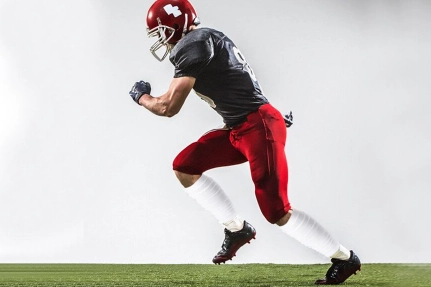
From Friday night lights to professional soccer stadiums, football sleeves have become a staple. They’re no longer just accessories—players at every level use them for support, recovery, and even style. Whether you’re trying to protect against turf burn, keep your legs warm, or rock the scrunched-sock look, there’s a football sleeve designed for the job.
Not sure whether to go with sleeves or stick with socks? Check out our guide on Football Sleeve vs. Socks for a deeper comparison.
What Is a Football Leg Sleeve?
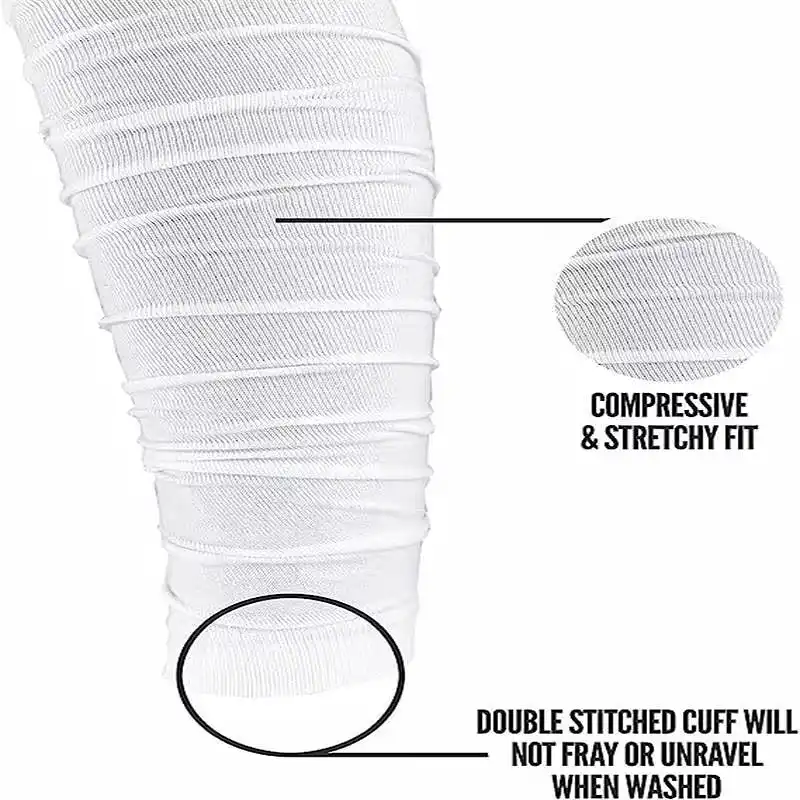
A football leg sleeve is a footless tube of performance fabric designed to cover the calf or full lower leg. Depending on the type, it can provide compression, padding, warmth, or simply hold your shin guards in place. Athletes wear them in both American football and soccer, with slightly different priorities: one focuses on impact protection and turf burns, the other on grip socks and shin guard security.
The Main Types of Football Sleeves
Compression Sleeves
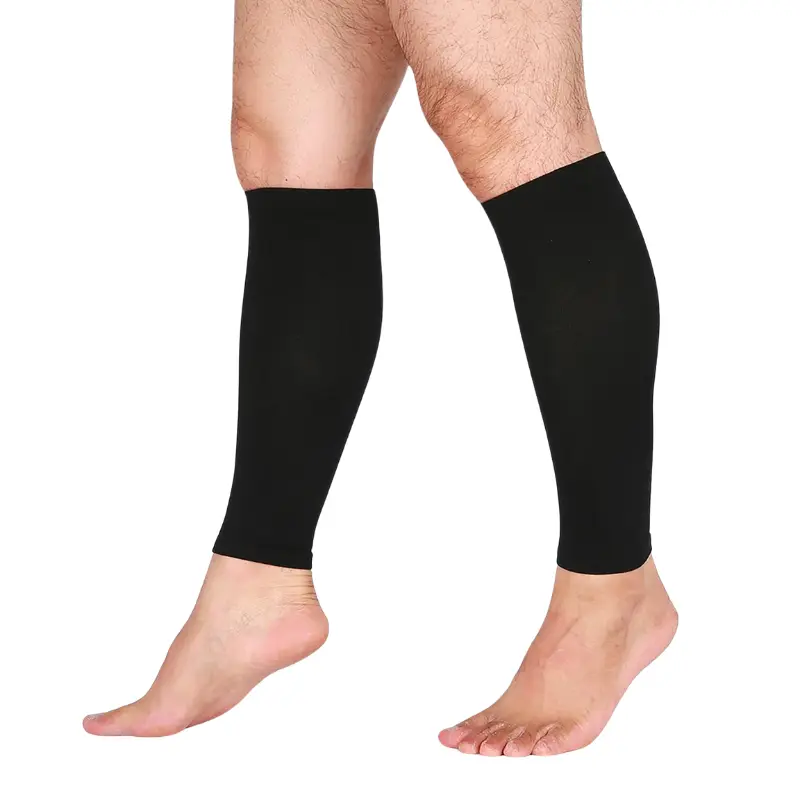
The most common choice, compression sleeves hug your calves to reduce muscle vibration and improve circulation. Players wear them to delay fatigue, recover faster, and avoid turf burns. They’re typically made from a nylon/polyester blend with 15–25% elastane for stretch.
Best for: skill players, midfield runners, or anyone logging long minutes.
Scrunch Sleeves
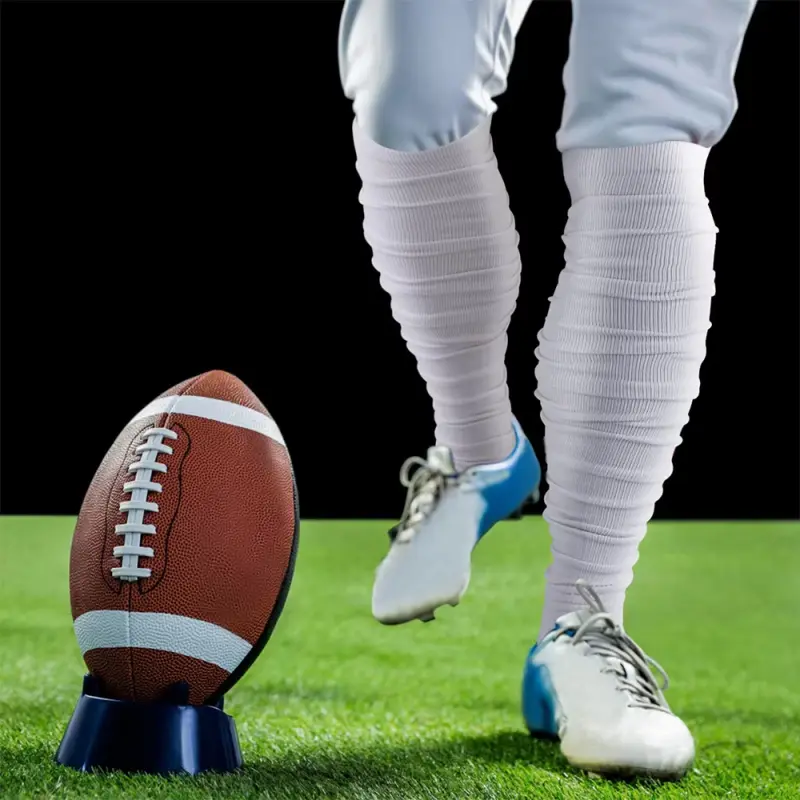
Scrunch sleeves mimic the old-school stacked sock look—loose around the calf, but designed to stay in place. Popular in American football for both aesthetics and mild compression, they’re often made with a cotton-nylon blend for texture and comfort.
Best for: players who want both performance and a standout style.
Padded Sleeves
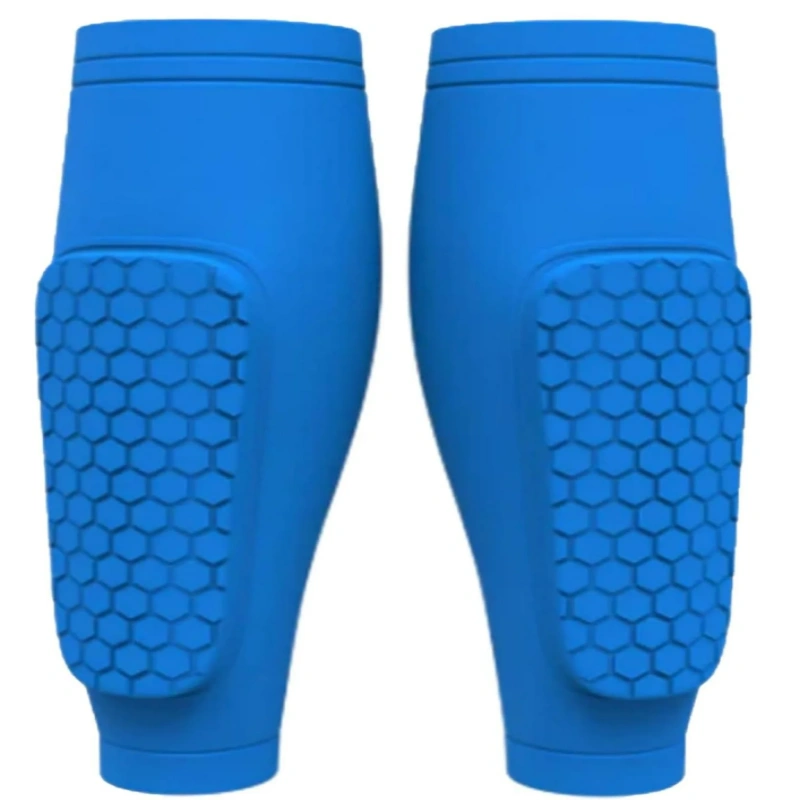
These sleeves add EVA or Poron foam pads at the knee, shin, or calf. They absorb impact from tackles, protect against hard ground, and reduce abrasions on turf. Soccer goalkeepers and football linemen especially benefit from this added protection.
Best for: contact-heavy positions or athletes recovering from knocks.
Thermal Sleeves
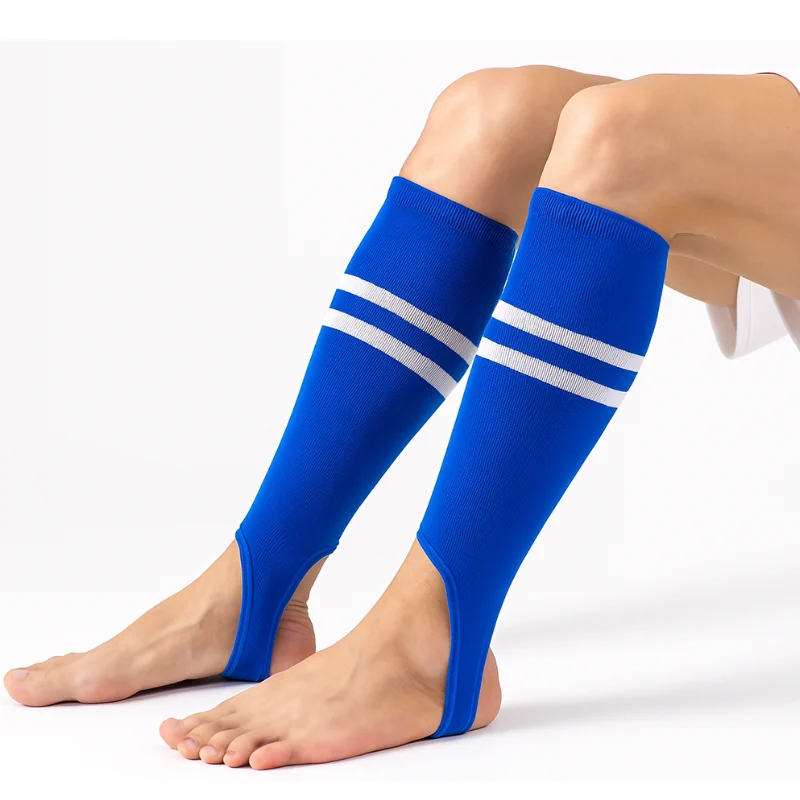
Designed for cold conditions, thermal sleeves use fleece-lined polyester or neoprene to retain heat. They keep muscles limber and help prevent cramps on chilly game days.
Best for: late-season football games or winter training sessions.
Shin-Guard Sleeves (Soccer)
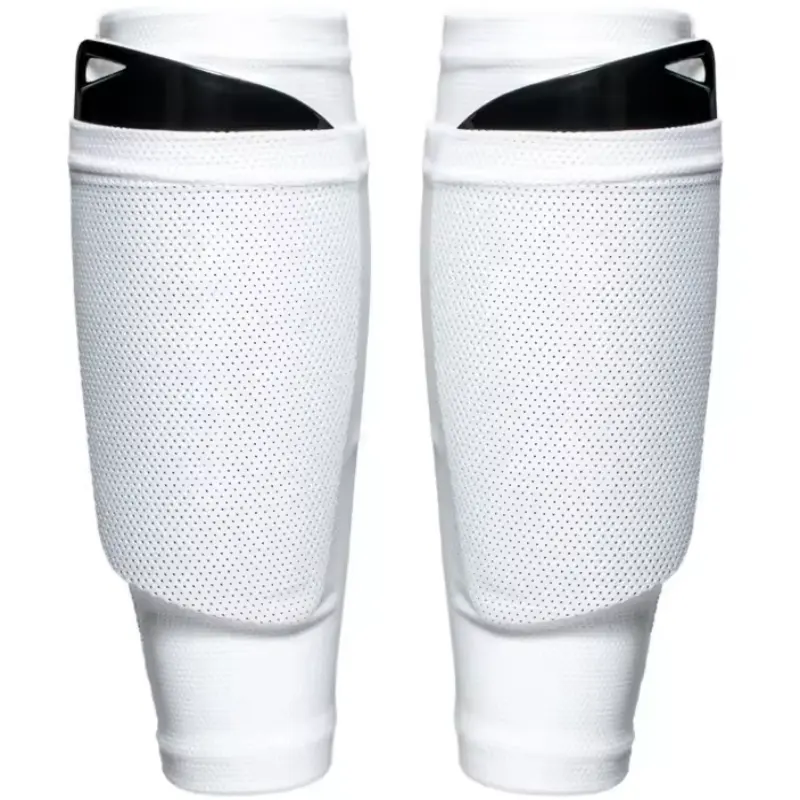
A must for modern soccer players, these sleeves hold shin guards firmly in place—no more messy athletic tape. Often paired with grip socks, they provide a sleek, secure fit that meets league rules.
Best for: soccer players looking for comfort and compliance.
Recovery Sleeves
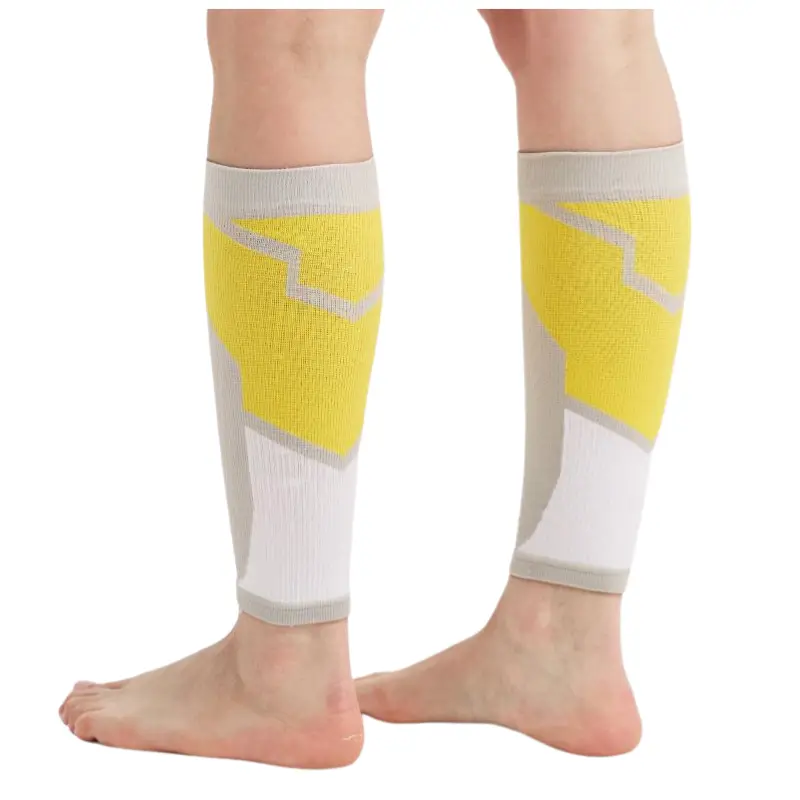
Higher-compression designs that promote circulation after games or during travel. They help reduce swelling and speed up recovery, especially useful for players with frequent matches or long flights.
Best for: post-match recovery and tournament travel days.
Materials & Build: What to Look For
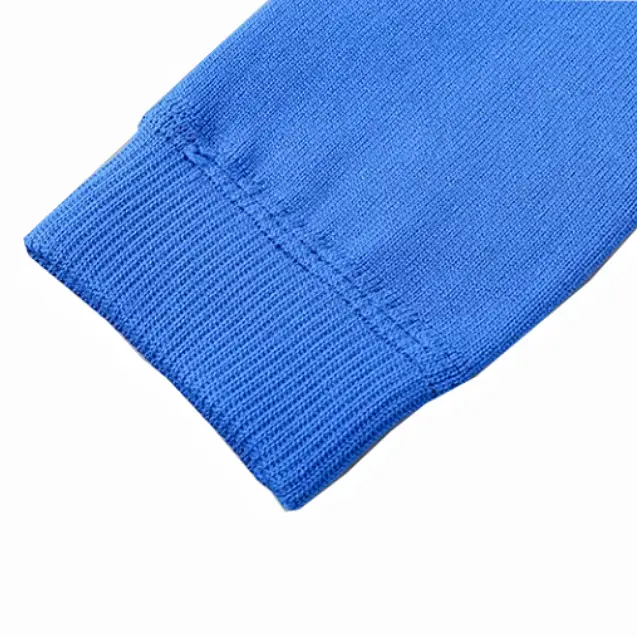
Not all football sleeves are created equal. The fabric blend is the first thing to check:
- Nylon is tough and abrasion-resistant, making it ideal for turf play.
- Polyester dries quickly and wicks away sweat, keeping legs cool.
Most quality sleeves combine both durability and comfort.
The second ingredient is elastane (spandex). This fiber gives sleeves their stretch and ensures they stay snug during fast cuts or sprints.
For extra protection, some sleeves include padding. Lightweight EVA foam cushions hits, while premium Poron XRD stays flexible until impact, then firms up for protection.
Finally, smart design details—like silicone grippers to stop slipping, flatlock seams to reduce irritation, and antimicrobial treatments to fight odor—add real-world comfort and extend the sleeve’s lifespan.
Rules & Compliance
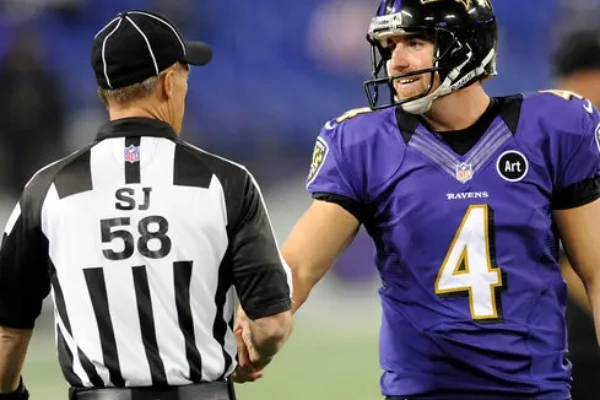
Getting the right sleeve is only half the battle—you also need to make sure it’s legal on game day.
- NFL & NCAA (American Football): Players’ lower legs must be fully covered from the shoe to the knee. Pants go down to the knee, and socks or sleeves fill the gap below. Colors must match the team uniform, and any non-approved logos need to be hidden. Sleeves are fine, as long as they blend seamlessly with the rest of the kit.
- FIFA & UEFA (Soccer): The global rules are even stricter. Any sleeve or tape worn over socks has to be the exact same color as the sock. Shin guards are mandatory and must sit underneath. Only soft padding is allowed—anything hard or bulky is considered unsafe.
Quick Tip: Choose sleeves in your official team colors to stay compliant and avoid last-minute uniform issues.
Size & Fit Guide
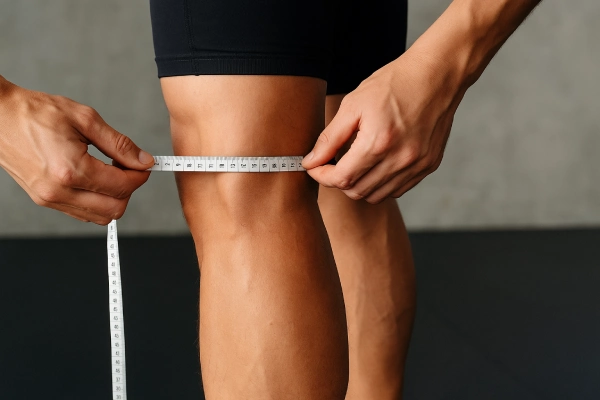
Getting the right fit is the difference between a sleeve that actually works and one that slides around or cuts off circulation. Start by measuring the circumference of your calf at its widest point and the length from ankle to just below the knee. Use these numbers against the brand’s sizing chart—don’t just guess by shoe size.
A proper sleeve should feel snug and supportive without pinching. You should notice a light, even squeeze that encourages blood flow, but never numbness or tingling. If that happens, the sleeve is too tight and you’ll need to size up.
To keep your gear performing longer, treat it like performance wear: wash in cold water, air-dry flat, and avoid the dryer. Excessive heat breaks down elastane fibers, which leads to sagging and reduced compression over time. With good care, a quality pair can easily last a full season or more.
Buying Guide: Budget vs. Premium
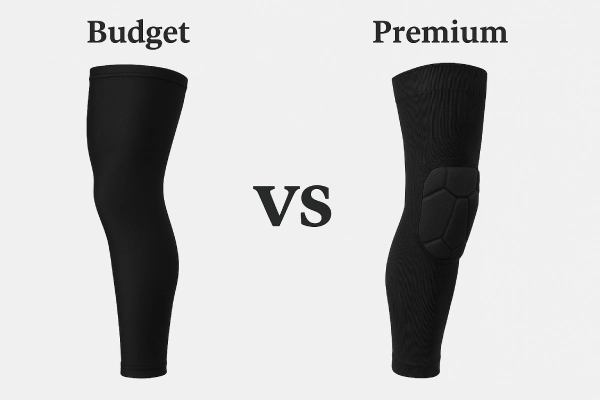
Football sleeves cover a wide price spectrum, and the differences usually come down to fabric quality, construction, and add-on features:
- Budget ($10–$15): Entry-level nylon/spandex blends. They offer basic compression and protection from turf burns—perfect for training or casual players—but often lose elasticity after heavy use.
- Mid-range ($20–$30): Branded sleeves with reinforced stitching, improved moisture-wicking, and more consistent compression. This tier usually balances durability and price, making it ideal for youth programs or team bulk orders.
- Premium ($35+): High-performance models with medical-grade compression, impact-absorbing EVA or Poron pads, UV protection, and advanced knit designs. They’re built to withstand rigorous seasons and deliver both performance and security.
If you’re purchasing for a team or looking at bulk orders, mid-range products are often the sweet spot—affordable enough for multiple players, yet durable enough to last through practices and competitive play. Premium sleeves are best reserved for athletes who demand extra protection or recovery support.
When to Choose Each Type
- Explosive skill players on turf: Opt for a compression sleeve if you want maximum muscle support, or a padded sleeve if you also need extra protection against turf burns and collisions.
- Cold-weather games: A thermal sleeve worn under your socks helps retain heat, keeping muscles warm and flexible during chilly late-season matchups.
- Soccer players using grip socks: Pair them with a shin-guard sleeve in your team’s color. It secures your guards without tape and ensures you stay compliant with FIFA/UEFA rules.
- Recovering from a calf strain or shin splints: A compression sleeve provides stability, while a recovery sleeve with higher compression promotes circulation and faster healing between games.
FAQs About Football Leg Sleeves
Why do football players wear leg sleeves?
Football players wear leg sleeves for multiple reasons: compression support, injury prevention, and skin protection. Sleeves help reduce muscle fatigue, guard against turf burns, and provide warmth in cold games. They’ve also become part of on-field style and team uniform culture.
What does a compression sleeve do in football?
A compression sleeve improves blood circulation in the legs, which helps stabilize muscles and reduce vibration during play. In football, this means fewer cramps, faster recovery, and better endurance across four quarters. Some sleeves also protect against abrasions and minor impacts.
Are leg sleeves required in the NFL?
Yes, in practice, most NFL players wear sleeves or socks because league rules require the lower leg to be fully covered. While specific “leg sleeves” aren’t mandatory, players must wear stockings or equivalent gear in team colors, with no unauthorized logos showing.
Why don’t football players wear long sleeves anymore?
Many players prefer short sleeves for freedom of movement, reduced overheating, and to avoid giving opponents extra fabric to grab. Instead, they use arm or leg sleeves for targeted support and protection, without the drawbacks of full long-sleeve jerseys.
How to wear leg sleeves for football?
To wear leg sleeves correctly, slide them over the foot and up the calf so they sit snugly without rolling down. Make sure the fit is tight but comfortable, matching your team’s colors for compliance. Some players layer sleeves with socks or tape for added security.
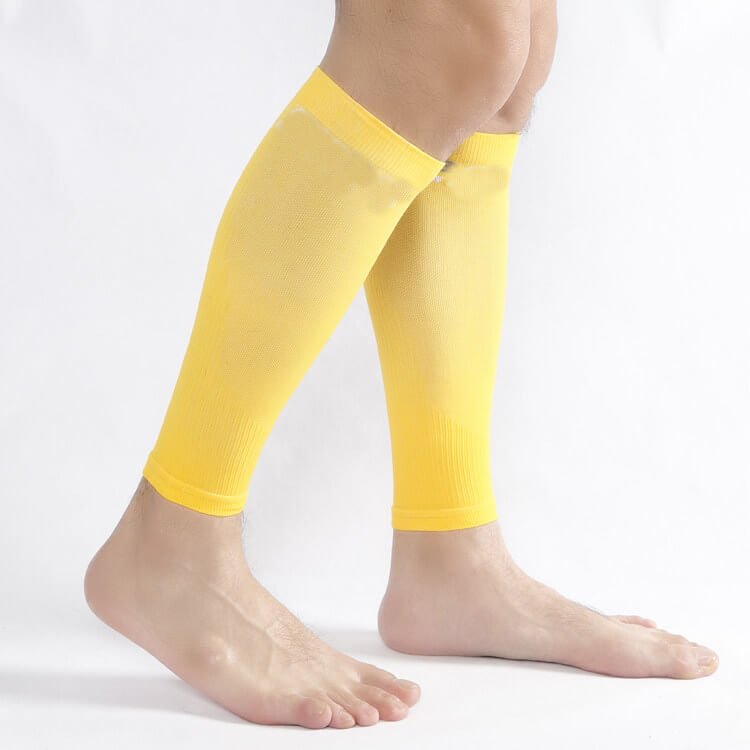
At Max Hosiery, we manufacture custom, league-compliant football sleeves built for teams and programs—color-matched, durable, and available with compression or padded options. We focus on bulk and custom production rather than small, one-off purchases.
Ready to gear up? Contact us to explore custom and wholesale football sleeve options designed for your needs.
